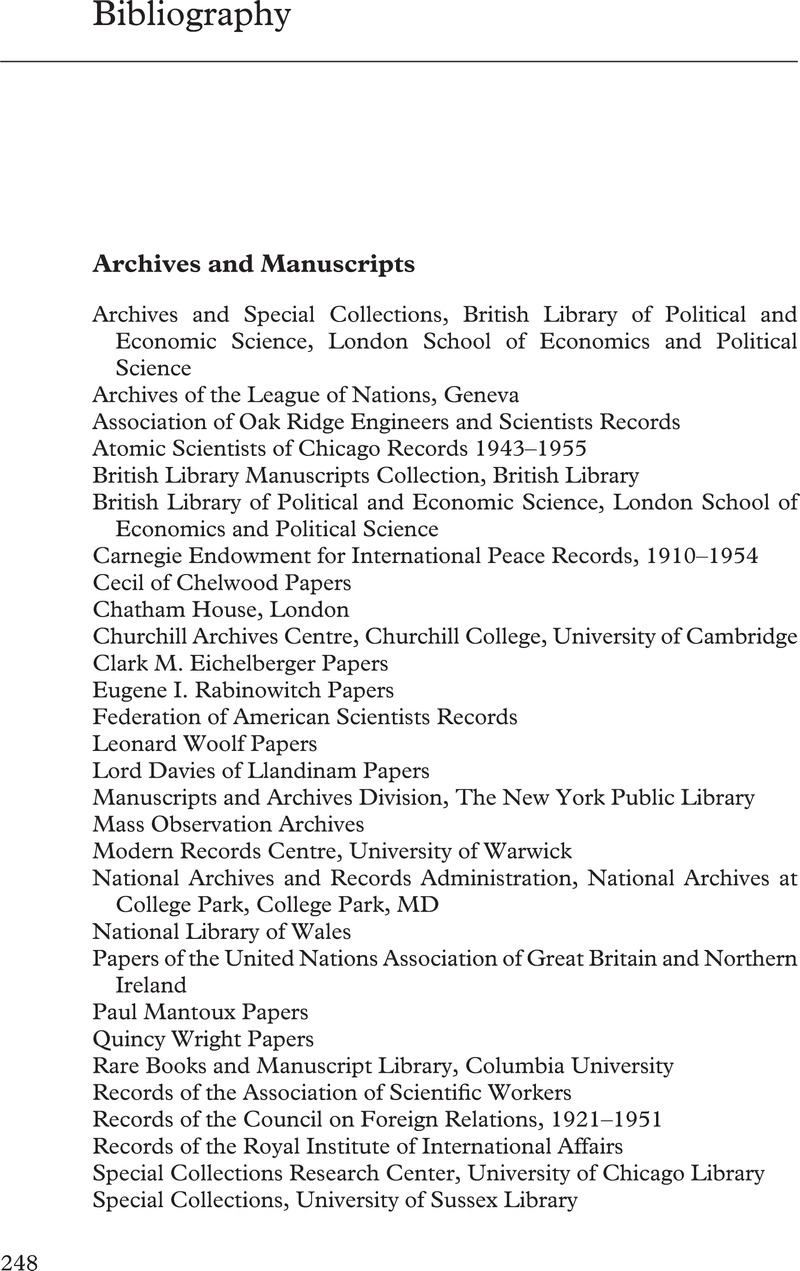 Technological Internationalism and World Order
Technological Internationalism and World Order Book contents
- Technological Internationalism and World Order
- Science in History
- Technological Internationalism and World Order
- Copyright page
- Dedication
- Contents
- Figures
- Acknowledgements
- Abbreviations
- Introduction: Machines of Peace
- 1 Invention, Interdependence, and the Lag
- 2 Controlling Scientific War
- 3 The Shape of Things to Come
- 4 Air Power for a United Nations
- 5 Wings for Peace: Planning for the Post-War Internationalization of Civil Aviation
- 6 A Battle for Atomic Internationalism: United States and the International Control of Atomic Energy
- 7 A Blessing in Disguise: Britain and the International Control of Atomic Energy
- Conclusion: Science, Technology, and Internationalism into the Cold War and Beyond
- Bibliography
- Index
- References
Bibliography
Published online by Cambridge University Press: 25 May 2021
- Technological Internationalism and World Order
- Science in History
- Technological Internationalism and World Order
- Copyright page
- Dedication
- Contents
- Figures
- Acknowledgements
- Abbreviations
- Introduction: Machines of Peace
- 1 Invention, Interdependence, and the Lag
- 2 Controlling Scientific War
- 3 The Shape of Things to Come
- 4 Air Power for a United Nations
- 5 Wings for Peace: Planning for the Post-War Internationalization of Civil Aviation
- 6 A Battle for Atomic Internationalism: United States and the International Control of Atomic Energy
- 7 A Blessing in Disguise: Britain and the International Control of Atomic Energy
- Conclusion: Science, Technology, and Internationalism into the Cold War and Beyond
- Bibliography
- Index
- References
Summary

- Type
- Chapter
- Information
- Technological Internationalism and World OrderAviation, Atomic Energy, and the Search for International Peace, 1920–1950, pp. 248 - 291Publisher: Cambridge University PressPrint publication year: 2021


